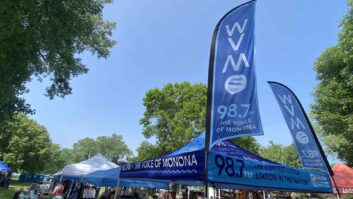Hispanic Heritage Month should prompt community radio consideration of growth.
In just over a week, cities across the United States will recognize the start of Hispanic Heritage Month. The celebration is not a month per se, starting Sept. 15 in alignment with the date widely noted as Mexico’s Independence Day, Sept. 16. However, there will be no shortage of activities nationwide.
As with all holidays, community radio has an important programming and event opportunity with Hispanic Heritage Month.
American Latinos are reshaping media now. In addition, this youthful, technically savvy demographic will have a major impact on community and public media in the years to come.
The Pew Research Center points out the digital divide, a persistent gulf in internet connectivity and usage between whites and people of color, is today at its most narrow point since 2009. According to its surveys, Pew says the number of Latino adults who report using the internet increased 20 percentage points, up from 64% in 2009 to 84% in 2015. Over the same period, online access among whites went up just nine points. Among Latinos, 95% of 18–29-year-olds reported going online, while 93% those 30–49 years old said they did so. As with other groups, Latinos’ online forays are often on mobile.
Also of interest in the Pew study, Latinos who primarily speak English are online at a far larger clip than bilingual or primarily Spanish speakers.
Language is an especially important statistic now and will be in the coming years. Pew points out more Latinos are consuming news in English than ever before. In addition those Latinos who pick up news in both languages or simply Spanish declined for these constituencies. As immigration slows, more Latinos are born in the United States and greater acculturation occurs, Pew says, Spanish-language news dependency is fading.

Such shifts should prompt community and public radio stations to take a long look at where they are at, and how they engage Latino audiences.
While I love my community radio leaders, I have to encourage each of them to consider the value of their Latino communities more. Too many of us assume Telemundo and Univision just serve them, or that Spanish fluency is required. Although cultural competency is valuable, the first step is recognizing what your Latino community, the nation’s fastest growing population, means for your station’s future. This alone should motivate you to think about Hispanic Heritage Month as a starting point for much more work.
I hear at times from community radio station leaders who feel programming Spanish-language blocks will attract Latino audiences. My advice is simply to make what you want quantifiable. If you hope to grow your audience in this fashion, make sure your pledge drive, engagement and other objectives are things you can see, such as a new member goal. If it is purely a community service, this too needs to be demonstrated through what your station practically gets back beyond good feelings. I have written before about the necessity for community and public media to appreciate the diversity of this demographic and create relationships rather than putting out programming that supposedly provides a service to people with whom there is no relationship.
Some of the required self-criticism means avoiding old prejudices — one I heard in a community radio circle once was early-morning Spanish-language programming would serve monolingual Spanish-speaking day laborers, without absolutely no proof said laborers even knew the station existed, that the squawky, throwback-sounding programming would even be of interest or how much the community was even consulted about what it wanted. The rest of a better engagement push requires stopping seeing community radio as chasing every trend and instead collaborating more actively with neighborhoods to make programming that resonates.
In 2015, KPCC took the bold step of seeking to grow Latino audience with a multipronged approach that included adjusting fundamental aspects of its programming, working with local stakeholders to deepen the station’s presence in the Latino community and focusing on leadership development internally so the area Latino community could identify more with the station. KPCC recognized English-dominant Latinos in its city were an underserved audience and that they wanted not to have special programming, but rather to be included in the overall strategy of what the station did. The case study, done in part with the Latino Public Radio Consortium (PDF), is fascinating. The results — spikes in Latino listenership for KPCC — were tremendous.
How your community radio station participates in Hispanic Heritage Month may vary. Still, every station manager and board member should look for ways to make our links with new audiences richer, more reciprocal and stronger.






